Submitting supplementary data alongside your article can enhance its impact and provide valuable insights for your readers. It's a streamlined way to present additional findings, methodologies, or any extra information that supports your research without cluttering the main text. By doing so, you not only enrich your work but also foster a deeper understanding of your study's implications. Curious about how to effectively prepare and submit your supplementary data? Let's dive in!

Purpose and Context of Supplementary Data
Supplementary data serves to enhance the credibility and thoroughness of academic research articles, such as those published in peer-reviewed journals. This additional information can include detailed tables, figures, methodological protocols, or extended datasets that support the main findings of a study. It provides transparency by allowing readers to examine the underlying data, thereby ensuring the reproducibility of results. For example, in a clinical trial published in the New England Journal of Medicine, supplementary data may delineate participant demographics, treatment regimens, and statistical analyses that inform the primary outcomes of the research. By including this contextual information, authors strengthen their contributions to the scientific community and facilitate further research in their respective fields.
Detailed Description of Data Content
Article supplementary data submission involves the inclusion of additional materials that enhance understanding and can support claims made in the main text. This may consist of comprehensive datasets (like numerical tables or extensive survey results), detailed methodological descriptions (such as protocols used during experiments), supplementary figures (such as graphs and charts that visualize key results), and extended literature reviews. Ensuring clarity in data presentation, while adhering to specified journal formatting guidelines, is crucial for effective communication. Including raw data (like timestamps and results from experiments) may also be beneficial for reproducibility and transparency. Moreover, metadata (data that provides context about the datasets) is essential to facilitate interpretation and use by other researchers. Proper labeling and citing of all supplementary data sources helps maintain academic integrity and promotes further research.
Format and Accessibility of Data Files
Publication of supplementary data files in research articles is crucial for enhancing transparency and reproducibility. Researchers must ensure that their data is provided in accessible formats, facilitating analysis. Common formats include CSV (Comma-Separated Values) for tabular data and JSON (JavaScript Object Notation) for hierarchical data structures. Metadata should accompany data files to describe attributes, units, and sources, aiding in proper interpretation. Moreover, following guidelines from organizations like the International Committee of Medical Journal Editors (ICMJE) ensures compliance across various disciplines. Accessibility for users with disabilities can also be addressed by adhering to Web Content Accessibility Guidelines (WCAG), ensuring that data is usable by individuals with visual impairments or other disabilities. Proper documentation of the file structure, data dictionaries, and relevant software requirements enhances user experience when accessing supplementary materials.
Relevance to Main Article Findings
Supplementary data submissions provide crucial insights that enhance the main article findings published in esteemed journals like Nature or Science. These supplementary materials often include datasets, methodologies, or detailed statistical analyses that support the research conclusions derived from the primary study focusing on topics such as human genetics or climate change impacts. For instance, extensive raw data tables demonstrating correlations between variables can validate hypotheses presented in the main article. The inclusion of additional methodological details clarifies experimental processes used in research, allowing for reproducibility of results in future studies. Furthermore, in-depth figures or charts elucidating underlying trends or anomalies contribute to a more comprehensive understanding of the subject matter discussed in the main article.
Ethical Compliance and Data Sharing Permissions
Ethical compliance in research involving human subjects is essential for maintaining integrity and trust. Institutional Review Boards (IRBs) assess research proposals to ensure adherence to ethical standards, protecting participant rights and welfare. Data sharing permissions are crucial for transparency, allowing researchers to disseminate findings responsibly while respecting privacy regulations, such as the General Data Protection Regulation (GDPR) in Europe. Approval from relevant authorities ensures compliance with ethical guidelines, promoting collaboration within the research community. Understanding these frameworks guarantees that supplementary data provided for publication aligns with ethical practices, enhancing the quality and credibility of research contributions.
Letter Template For Article Supplementary Data Submission Samples
Letter template of accompanying documents for article's supplementary data

Letter template of request for supplementary data inclusion with article
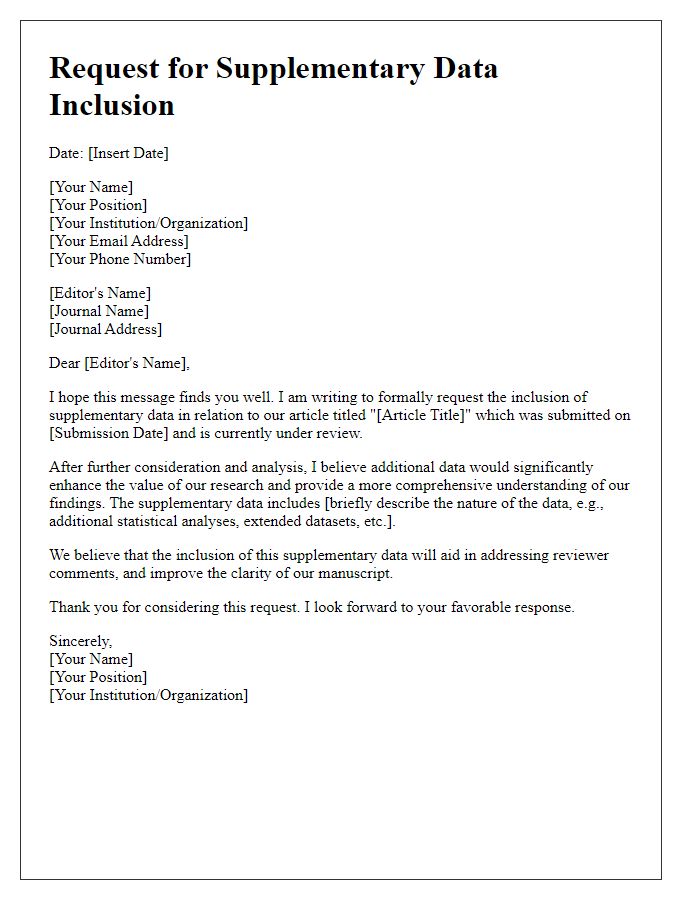
Letter template of notification for attaching supplementary materials to article
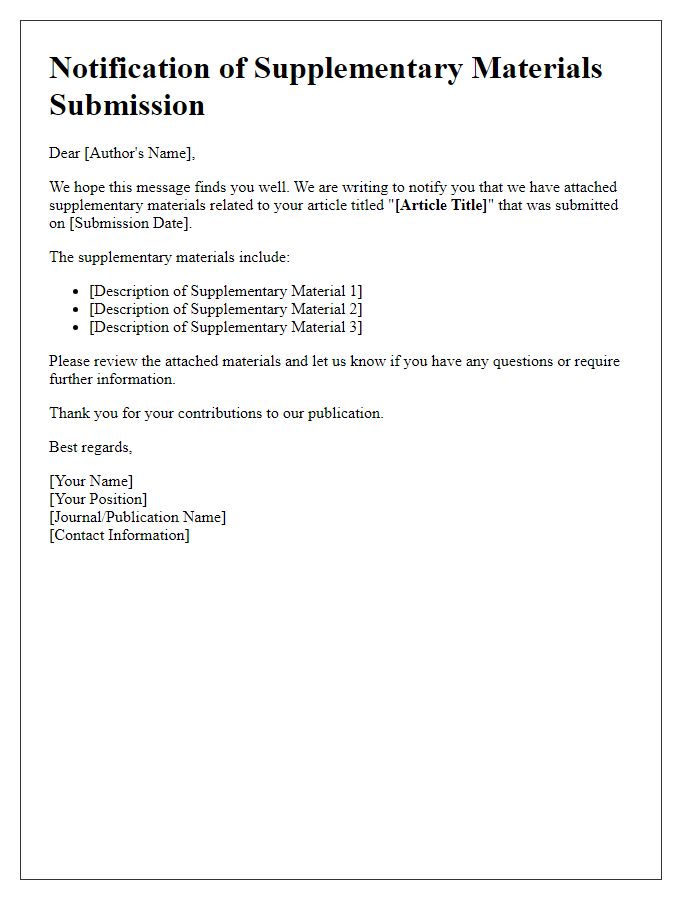
Letter template of confirmation for article’s supplementary data submission
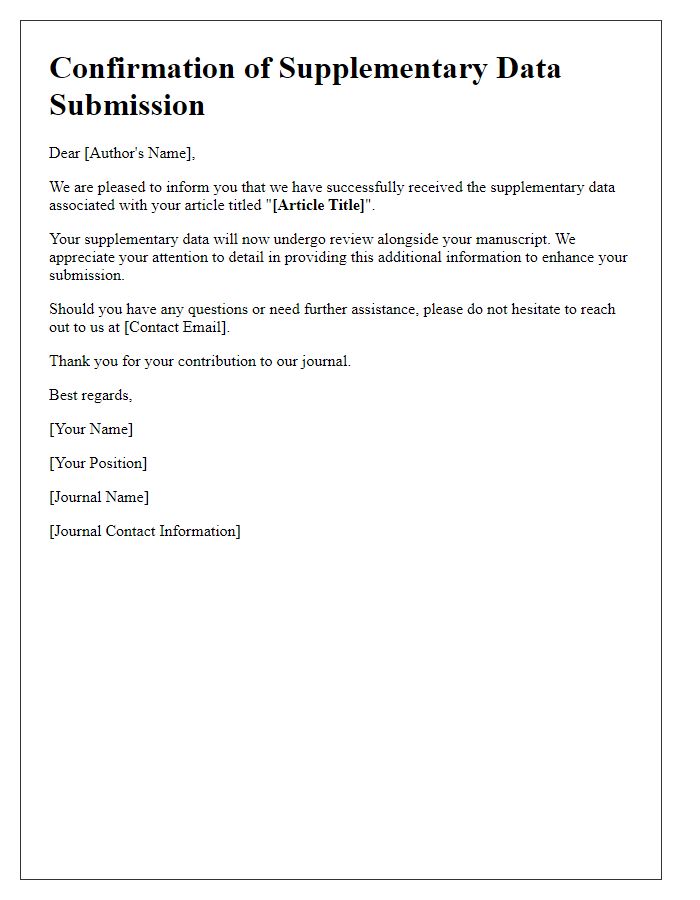
Letter template of support for article supplementary information provision
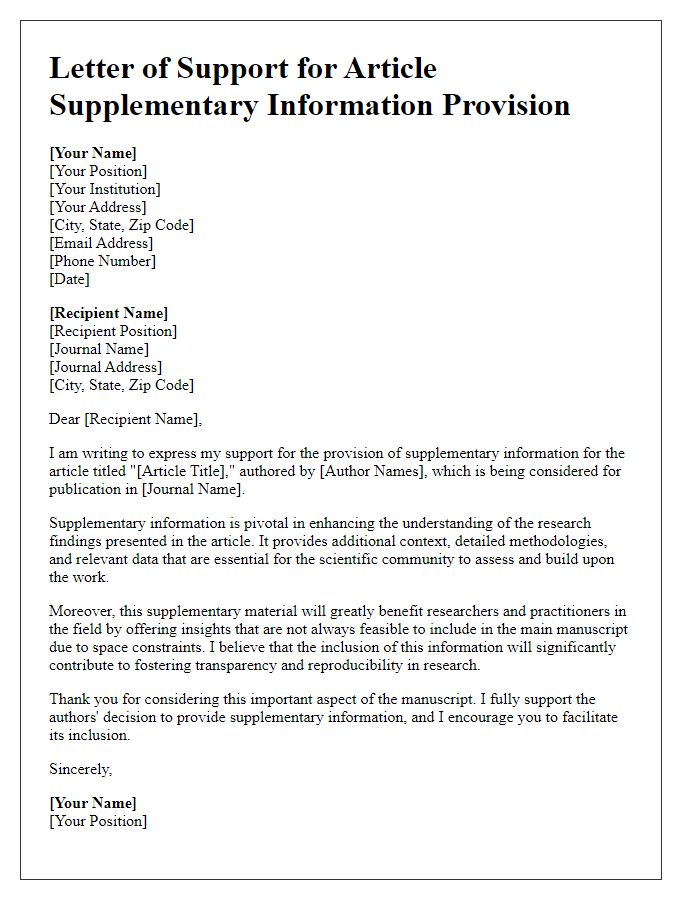
Letter template of clarification regarding submission of supplementary data
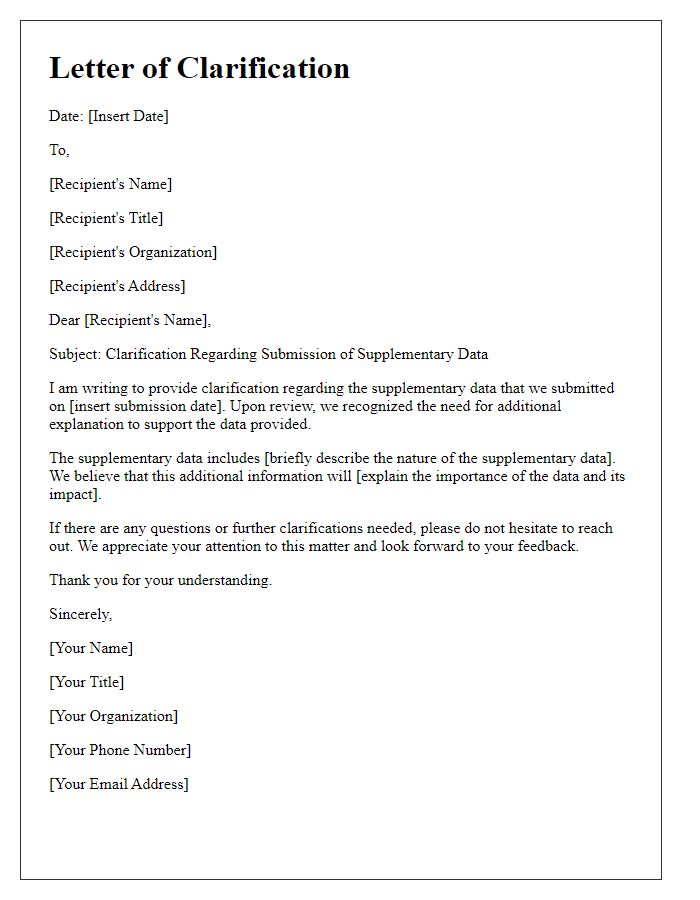

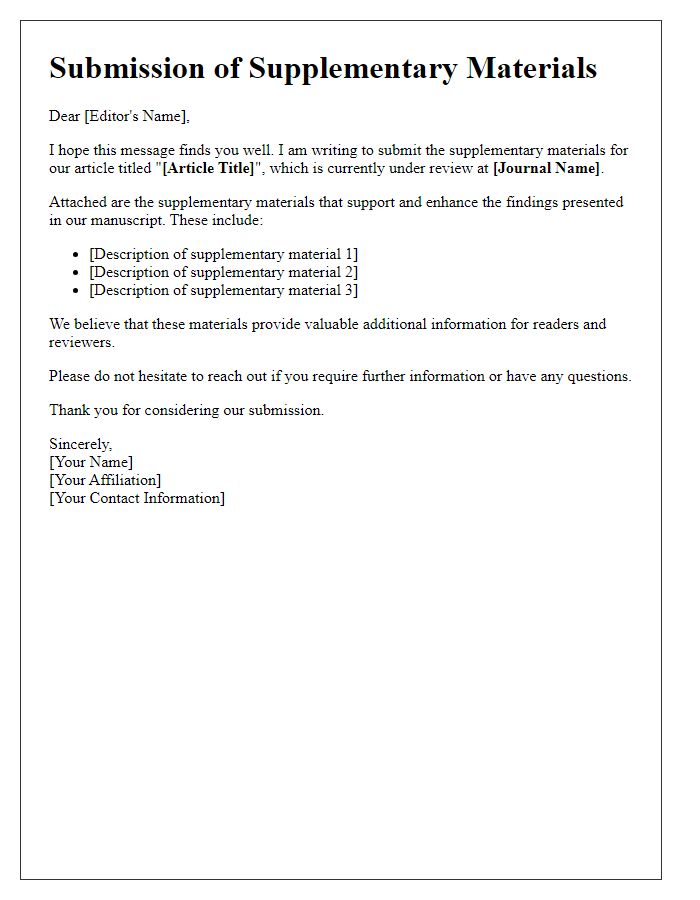
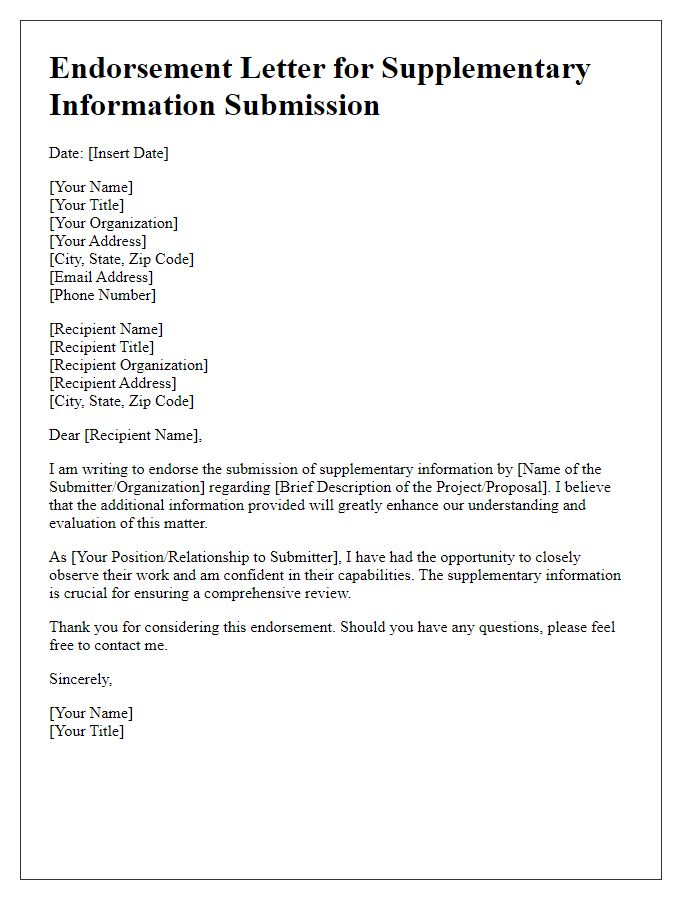
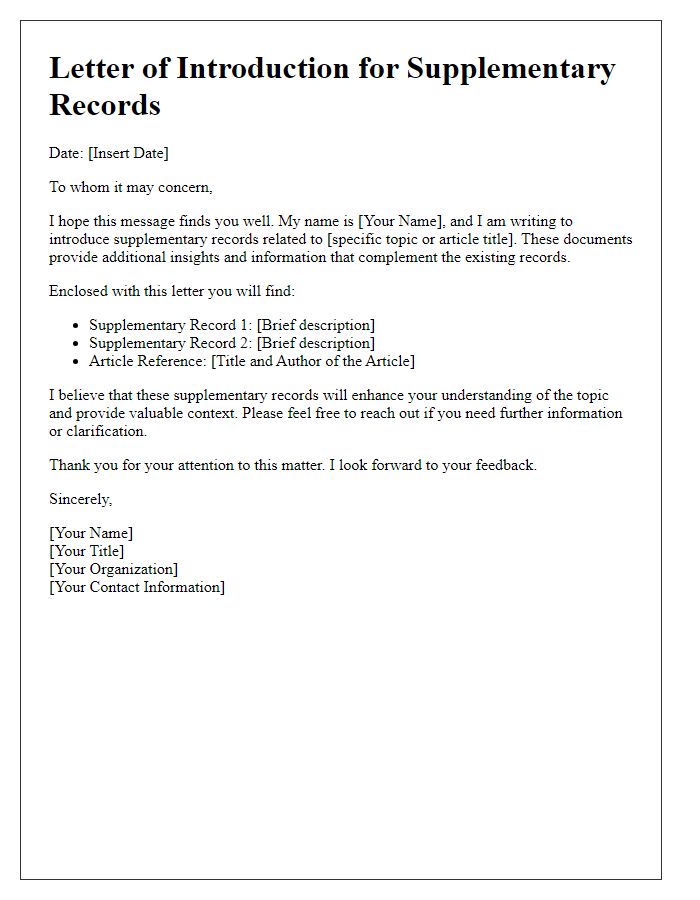
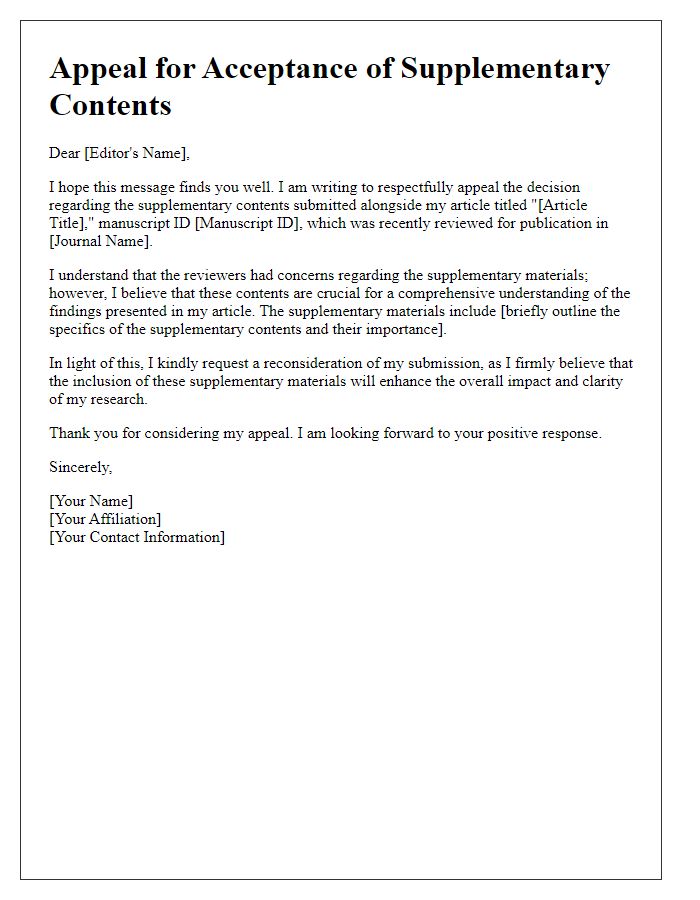


Comments